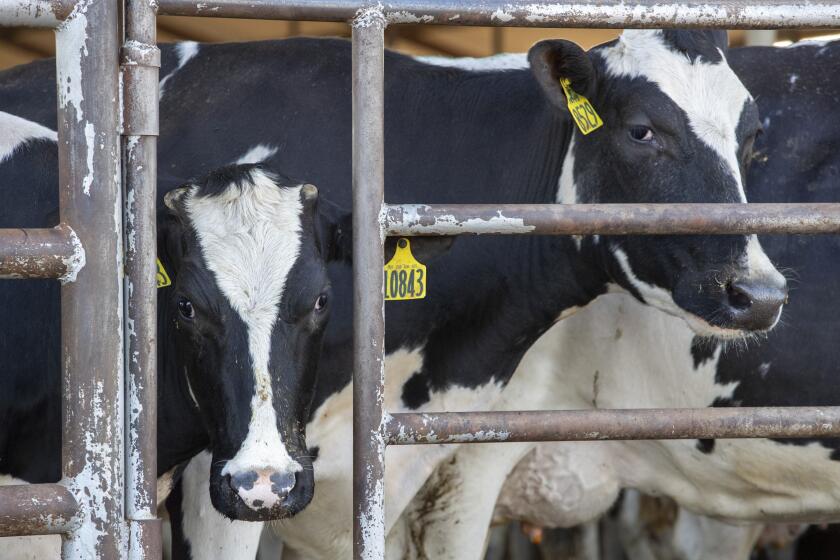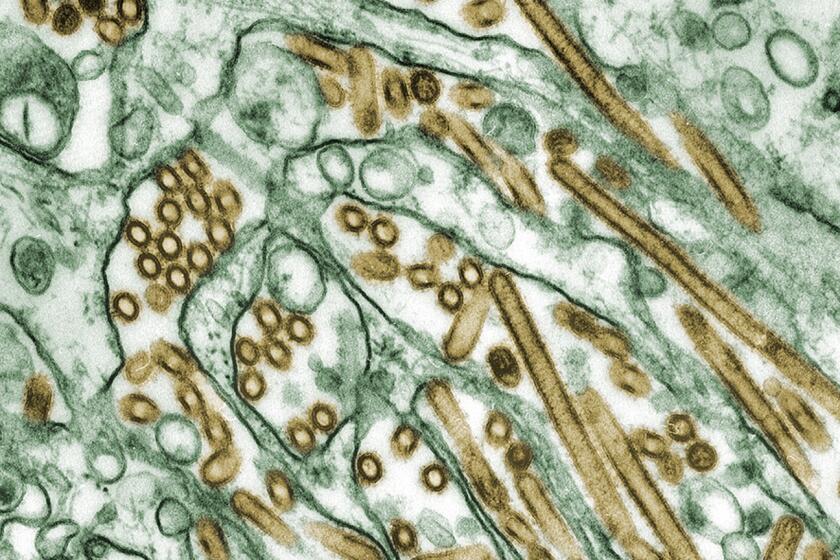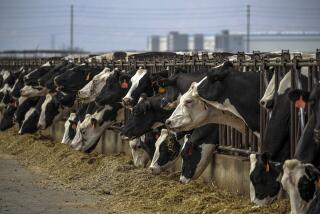
- Share via
There is a bird flu outbreak going on. Here is what you need to know about it:
What is bird flu?
Bird flu is what’s known as a highly pathogenic avian influenza virus. The “highly pathogenic” part refers to birds, which the virus is pretty adept at killing. In virology speak, the virus is of the Influenza A type, and is called H5N1. The “H” stands for the protein Hemagglutinin (HA), of which there are 16 subtypes (H1-H16). The “N” is short for Neuraminidase (NA), of which there are 9 subtypes (N1-N9). There are many possible combinations of HA and NA proteins. The two known type A human influenza viruses are H1N1 and H3N2. (Two additional subtypes, H17N10 and H18N11, have been identified in bats).
When did this bird flu first appear?
The current strain of H5N1 circulating the globe originated in 1996, in farmed geese living in China’s Guangdong province. It quickly spread to other poultry and migrating birds. By the early 2000s, it had spread across southern Asia. By 2005, it was observed in the Middle East, Africa and Europe. In 2014, it showed up in North America, but appeared to peter out here while it still raged in Europe, the Middle East and Africa. In 2021, it showed up in wild birds migrating off Canada’s Atlantic coast. Since then, it has spread across North and South America.
A highly infectious bird flu that has felled millions of birds globally is in California. Experts worry it could affect our food supply.
What kinds of animals does bird flu effect?
Birds are the primary carriers and victims of the virus. Across the globe, hundreds of millions of wild and domestic birds have died. Since 2021, hundreds of U.S. poultry farms have had to “depopulate” millions of birds after becoming infected, presumably from sick, migrating wild birds. The virus is highly contagious among birds and has a nearly 100% fatality rate. Mammals, too have been infected and died. In most cases, these are scavenging or predatory animals that ate sick birds — and the virus has died in these animals and not become contagious between them. So far, 48 species of mammals have become infected. However, there have been a few cases in which it appears the virus may have spread between mammals, including on European fur farms, on a few South American beaches where elephant seals came to roost, and now among dairy cattle in the United States.
What is driving the unprecedented spread of avian flu?
Can humans get bird flu?
Since 2003, when the virus first started spreading through southern Asia, there have been 868 cases of human infection with H5N1 reported, of which 457 were fatal — a 53% case fatality rate. There have been only two cases in the U.S. In 2022, a poultry worker was infected in Colorado and suffered only mild symptoms, including fatigue. In 2024, a dairy worker was infected in Texas and complained only of conjunctivitis, or pink eye.
Why is everyone paying attention to dairy cows?
On March 25, 2024, officials announced that dairy cows in Texas had been infected with bird flu. Since then, the virus has been found in 36 herds across nine states. There are no known cases in California. It is believed that there was a single introduction of the virus from wild bird exposure (either by passive exposure, or maybe from eating contaminated feed), that probably occurred in December in Texas. The virus has since been detected in milk. A study conducted by federal researchers found that 1 in 5 milk samples collected from retail stores had the virus. It is believed that the virus may be passing between cows and that there may be cows that show no symptoms. For the most part, it seems dairy cows only suffer mild illness when infected, and milk production slows. They clear the virus after a few weeks.
As the avian flu continues to threaten poultry farms and wildlife, are factory farms a sitting duck?
Is it safe to drink milk?
Yes — if it is pasteurized milk. Federal officials say the virus they have detected in pasteurized milk samples is inactive and will not cause disease. In the case of raw milk, they urge people to avoid it. That’s because they have found high viral loads in raw milk samples. In addition, studies of barn cats that have consumed raw milk have reported severe consequences. In one cluster of 24 barn cats, half of them died after consuming raw milk, with others suffering blindness, neurological distress and copious nasal discharge. The virus has not been found in sour cream or cottage cheese.
Despite warnings of H5N1 bird flu outbreaks among dairy cattle, raw milk enthusiasts say they will continue to drink unpasteurized milk.
What’s the situation with wastewater?
As health officials and researchers scramble to understand how widespread avian flu is in cattle and the environment, they are analyzing municipal wastewater. One team from Emory University and Stanford University looked at 190 wastewater treatment sites in 41 states. They found a surge of Influenza A virus in the last several weeks at 59 sites. This does not necessarily mean there is bird flu at these sites. However, in places where the team has gone to investigate — including three in Texas where they knew there was H5N1 in dairy cattle — they have found bird flu. Influenza A is generally seasonal in humans — peaking from late fall to early spring. The surge the researchers noticed — including at several sites in California — started after the flu season had died down. Researchers in Texas have also detected H5N1 in the wastewater of nine of 10 cities they tested, all located in Texas. The CDC is also monitoring for Influenza A at roughly 600 sites across the nation.
Samples from wastewater plants across the nation show an increase in multiple flu viruses. Some experts worry that H5N1 bird flu might be to blame.










